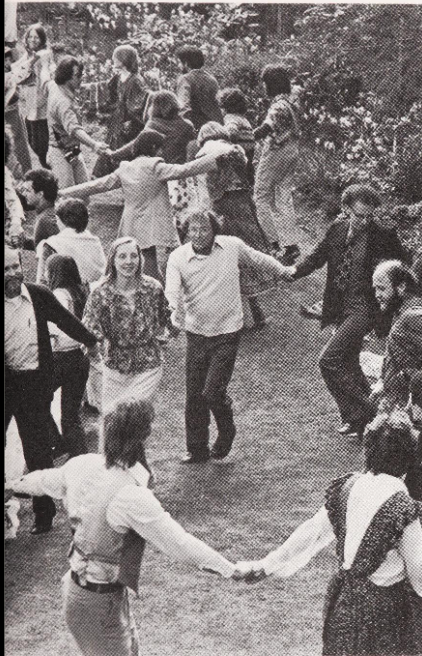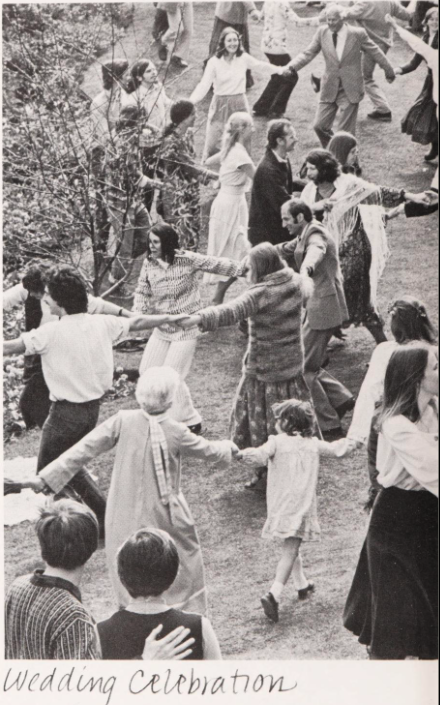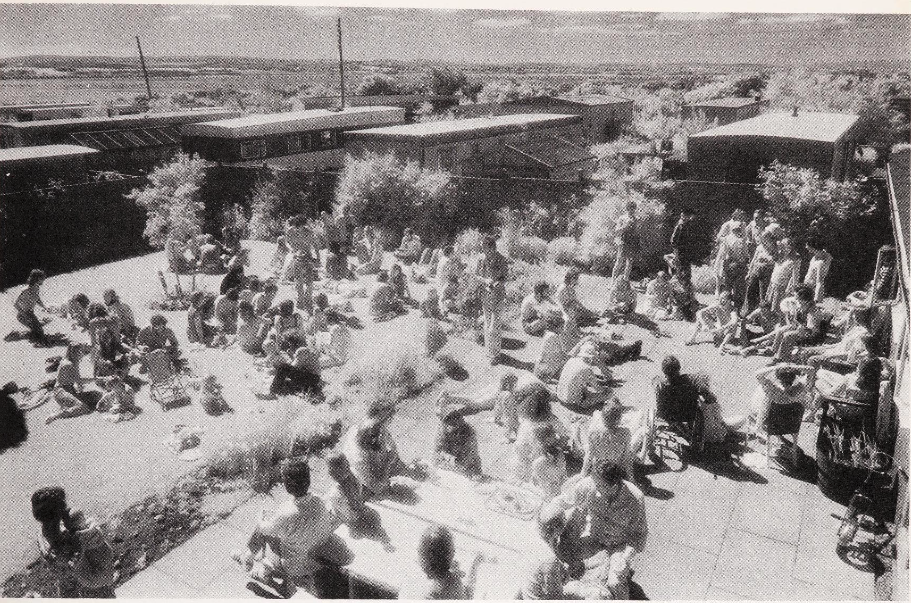Findhorn Ecovillage
Findhorn, Scotland
New Age / Ecovillage
Co-Op
1962 - Present
Findhorn, Scotland
New Age / Ecovillage
Co-Op
1962 - Present
1 Living Machine 2 Caravan Park 3 Community Center and Kitchen 4 Original Settlement 5 Universal Hall 6 Field of Dreams 7 Community Garden 8 Whins Housing Development 9 Nature Sanctuary 10 Whiskey Barrel houses 11 Wilkie’s Wood 12 Wind Park
![2017 Map of Findhorn. Plan: Drawn from author visit and Map of Findhorn by Findhorn Community]() Findhorn Ecovillage began as a caravan park in 1962, founded by Peter Caddy, Dorothy Maclean, and Eileen Caddy–who believed she could communicate telepathically with both extraterrestrials and God. Today, Findhorn is home to over 500 residents, and has one of the smallest ecological footprints in the developed world, about half the UK average. An early adopter of wind turbines, electric cars, permaculture, and wastewater treatment, the ecovillage is a UN-Habitat model of Best Practice for holistic and sustainable living.
Findhorn Ecovillage began as a caravan park in 1962, founded by Peter Caddy, Dorothy Maclean, and Eileen Caddy–who believed she could communicate telepathically with both extraterrestrials and God. Today, Findhorn is home to over 500 residents, and has one of the smallest ecological footprints in the developed world, about half the UK average. An early adopter of wind turbines, electric cars, permaculture, and wastewater treatment, the ecovillage is a UN-Habitat model of Best Practice for holistic and sustainable living.
Located in remote Northern Scotland, Findhorn is a network of separate entities and organizational layers that combine New Age spirituality and sustainability. a caravan park; Hand-built houses from natural materials utilizizing super insulation and energy from wind and sun, earthships, and strawbale houses are still in use and used as demonstration projects for their educational program. A Living Machine (1) uses plants and aquatic life to clean wastewater, and permaculture farms (9) and hoop house (7) produce organic vegetables sold to the surrounding community. Findhorn represents the ability for outlandish, new age beliefs–and occasionally downright delusions–to evolve into into sustainable and successful communities that have endured for decades.

Located in remote Northern Scotland, Findhorn is a network of separate entities and organizational layers that combine New Age spirituality and sustainability. a caravan park; Hand-built houses from natural materials utilizizing super insulation and energy from wind and sun, earthships, and strawbale houses are still in use and used as demonstration projects for their educational program. A Living Machine (1) uses plants and aquatic life to clean wastewater, and permaculture farms (9) and hoop house (7) produce organic vegetables sold to the surrounding community. Findhorn represents the ability for outlandish, new age beliefs–and occasionally downright delusions–to evolve into into sustainable and successful communities that have endured for decades.







Nam semper semper ex
In porttitor pellentesque sapien